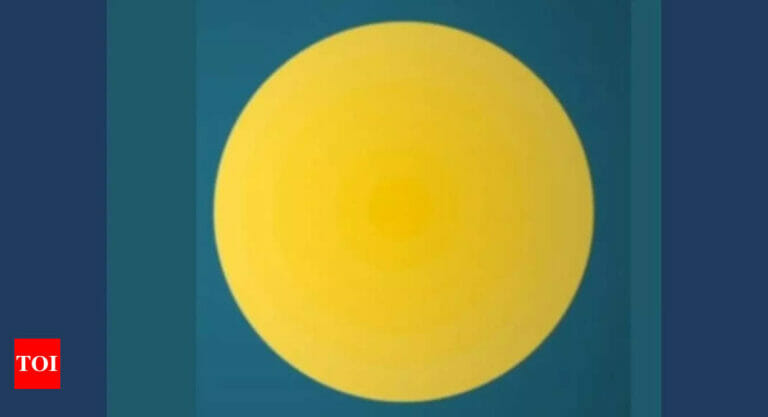You can enhance several brain functions within minutes through the use of optical illusions. How? Well, optical illusions operate based on the principle of cognitive dissonance. Cognitive dissonance arises when an individual holds two or more contradictory beliefs. This discomfort prompts people to seek ways to resolve the inconsistency and attain a smoother state of mind.Through this optical illusioninvolving circles, you can assess your visual intelligence.In theimage, a large yellow circle is presented, concealing multiple smaller circles within it. The challenge is to identify as many circles as you can within a span of 10 seconds. So, start the clock and locate the circles.Humans possess limited capacities to fully comprehend an image. Spotting circles, especially those with similar colors, can be a bit challenging. It’s important to remember that this optical illusion can only be effectively solved by individuals with exceptional critical thinking skills and high IQ levels. Therefore, if you boast traits akin to Einstein or Hawking, this puzzle might be well within your reach.Setting jest aside, this illusion serves as an excellent method to gauge how adept you are at identifying concealed patterns within an image. Alongside the prominent yellow circle, numerous concentric yellow circles of slightly varying shades are hidden within one another.It’s worth noting that IQ tests do not exclusively rely on tests like these to determine results. Thus, take this test’s outcomes with a grain of salt.However, this test can unveil aspects of your personality with some certainty. Successfully spotting all circles indicates an above-average IQ. Conversely, if you’re unable to locate even a single circle, your intelligence level might be below average.For those curious about the actual answer, refer to the image below:
(Source: TheSun)
Among the most intricate geometric shapes for the human brain to decipher are concentric circles. Experts highlight the significance of circles within the realm of geometry. In the Renaissance era, artists like Leonardo da Vinci employed circles in their works to achieve perspective and balance.
What are your thoughts on this image? How many concentric circles did you count? Share your findings in the comments below.
Categories: Trending
Source: newstars.edu.vn
Links: Optical illusion: Can you count how many circles are in this picture? – Tekmonk Bio, Optical illusion: Can you count how many circles are in this picture? – Kungfutv, Optical illusion: Can you count how many circles are in this picture? – Blogtomoney



GIPHY App Key not set. Please check settings